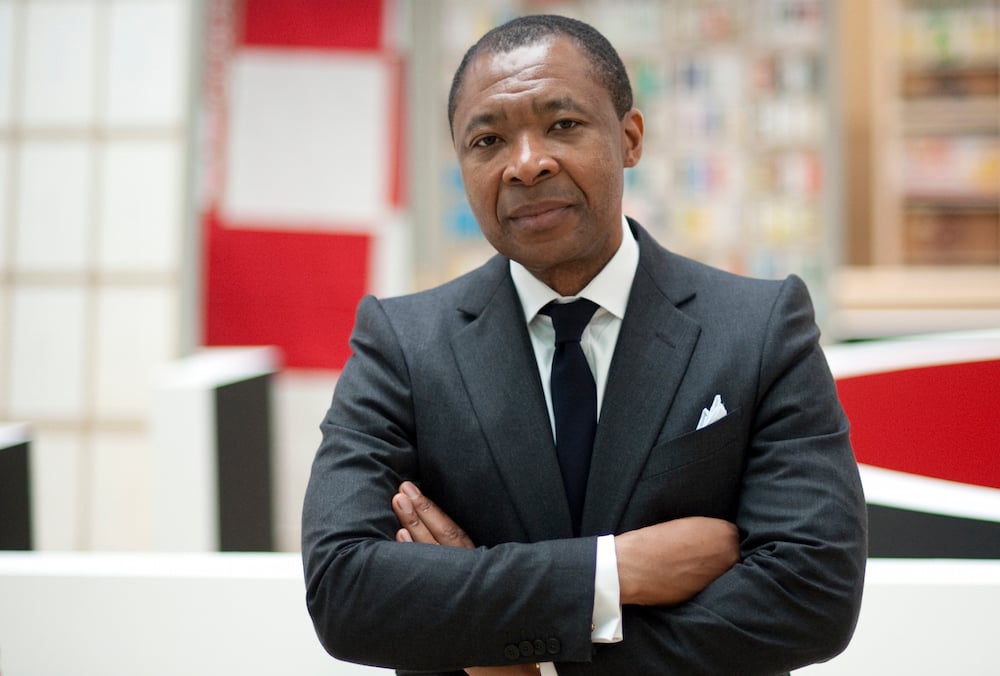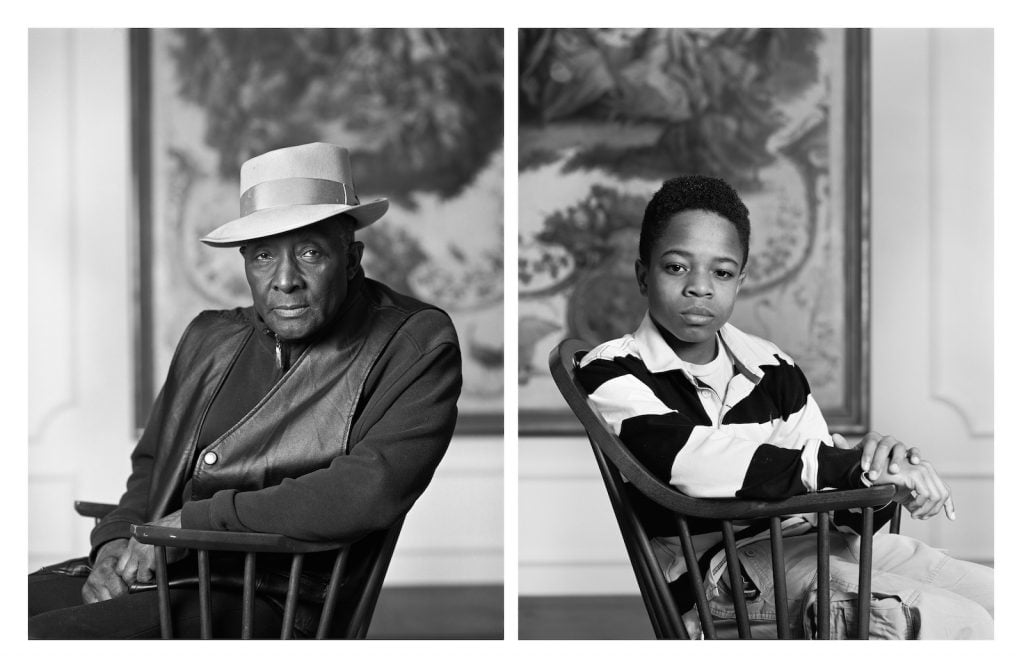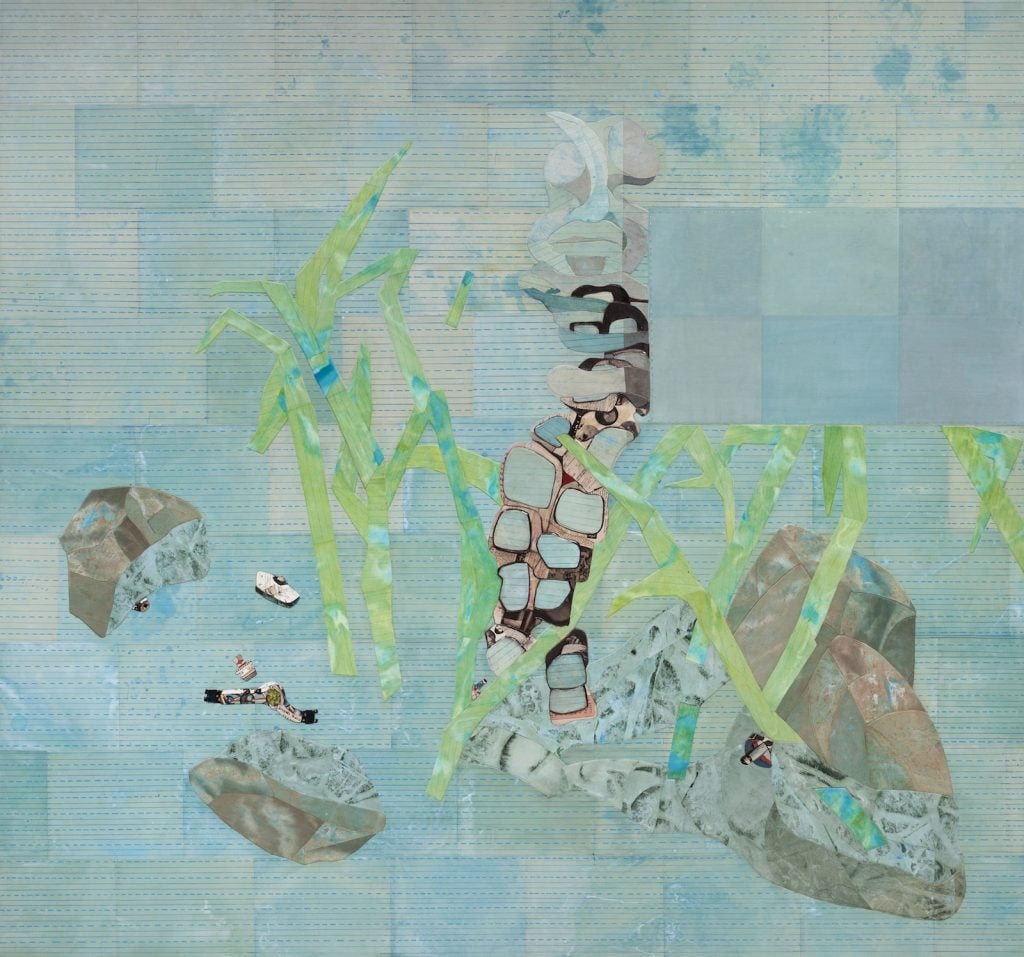Art World
Curator Naomi Beckwith on How the New Museum’s Show on Black Grief as a ‘State of Being’ Honors the Vision of Okwui Enwezor
The exhibition spans works as far back as the 1960s and takes over the entire New Museum.

The exhibition spans works as far back as the 1960s and takes over the entire New Museum.

Brian Boucher

“With the media’s normalization of white nationalism,” Okwui Enwezor wrote in 2018, “the last two years have made clear that there is a new urgency to assess the role that artists, through works of art, have played to illuminate the searing contours of the American body politic.”
Those words come from the late curator’s proposal for the exhibition “Grief and Grievance: Art and Mourning in America,” which opens this week at New York’s New Museum (through June 6). In that statement, Enwezor tied a sense of white grievance that arose after the Civil War to the necessity of grieving in Black America, the target of a century and a half of violence.
“Okwui’s framing of the project takes the idea of a political crime and transfers it to the register of psychological impact,” said curator Naomi Beckwith, who worked on the show, in a Zoom conversation with Artnet News. “The show’s title alludes not to a historic event, but rather to a state of being.”

Arthur Jafa, Love Is The Message, The Message Is Death, 2016. Courtesy the artist and Gladstone Gallery, New York and Brussels.
Occupying the entire building, the show has the somber distinction of being among the final projects of the famed curator. Planned to open around the time of the 2020 election, the show was delayed because of the pandemic.
The New Museum invited Enwezor to organize the show based on a series of lectures he was to give at Harvard treating the nexus of Black mourning and white nationalism. Two months before he died, in March 2019, he invited artist Glenn Ligon to serve as a collaborator. With the support of his estate, the museum established a team of three more curatorial advisors after his death: Beckwith, who will take up the post of deputy director and chief curator at New York’s Guggenheim Museum in June, and was a juror for Enwezor’s 2015 Venice Biennale; the New Museum’s artistic director Massimiliano Gioni; and UC Santa Cruz professor Mark Nash, who co-curated major exhibitions with Enwezor, including his acclaimed documenta 11, in 2002.
Enwezor had made extensive notes toward a roster and a checklist, centered on three artists who were core to the exhibition: Jean-Michel Basquiat, Daniel LaRue Johnson, and Jack Whitten. Where he had listed specific works, the museum secured them for the show; where he had not, the curatorial advisors and the artists settled on an existing work.

Dawoud Bey, Fred Stewart II and Tyler Collins, from the series “The Birmingham Project,” 2012. © Dawoud Bey. Courtesy Rena Bransten Gallery, San Francisco, and Rennie Collection, Vancouver.
The roster of artists, curators and scholars involved with the show is richly studded with MacArthur “genius” grantees like Ta-Nehisi Coates, LaToya Ruby Frazier, Kerry James Marshall, and Kara Walker, as well as many other giants like Mark Bradford, Theaster Gates, and Rashid Johnson. The show includes more than three dozen artists and has blockbuster works like Arthur Jafa’s rapturously received 2016 video Love Is the Message, the Message is Death; Johnson’s towering, 28-foot long sculpture Antoine’s Organ (2016); and a few Marshall paintings stretching to as much as 13 feet wide.
Another high-profile inclusion is a Ligon work that Enwezor commissioned for Venice in 2015, which will remain on the museum’s facade for a full year: A Small Band, which proclaims the words “blues blood bruise” in white neon and black paint. Those words are taken from remarks by Daniel Hamm, an innocent young Black man notoriously beaten by New York police in 1964, saying he had to squeeze blood out of a bruise to get the police to let him see a doctor. (Composer Steve Reich’s 1966 Come Out was inspired by the same words.)

Ellen Gallagher, Dew Breaker, 2015. Courtesy the artist and Hauser & Wirth.
But there are works that whisper, too, like Cameron Rowland’s 7.5’ (2015), a measuring strip of the kind placed near the door at convenience stores, meant to allow owners to be able to measure the height of suspected criminals caught on cameras. It will be installed at the museum’s exit, thus placing museumgoers in the position of suspects.
“What he is getting at is that there was a massive trauma at the basis of the American polity, the basis of the national experiment, and that has manifested itself in multiple ways,” Beckwith explained of Enwezor’s vision. “For the white subjects, there is the sense of loss of power, which manifests itself in political agitation, and, for the Black subject, it manifested itself as a condition of perpetual mourning. Those two positions, which are more affective positions than political positions, shift the conversation around race and introduce new terms—which is exciting, since the conversation about race in the US hasn’t been so productive thus far.”
Enwezor was committed to artists working in various formats, and the show makes a point to include a wide range of media.
“Okwui had a longstanding relationship with photography,” Beckwith pointed out. “In this show, you don’t see so many documentary representations of grief, but rather photography plumbing how grief can be replicated or even sublimated, for example how Carrie Mae Weems is thinking about how the traumatic moment can become spectacle. Or Dawoud Bey, who, with his beautiful Birmingham project, photographs subjects who are not the victims of the Birmingham church bombing in 1963, but rather those who live with the ripple effects, which go across time and history.”
But Enwezor was equally interested in performance, music (a focus of Gioni’s catalogue essay), and painting. “He was also very interested in abstraction,” Beckwith explained. “One of the standouts in the show is Julie Mehretu’s canvases. She explores being in an environment that feels exploded, or unmoored—and that is the emotional condition of grief.”